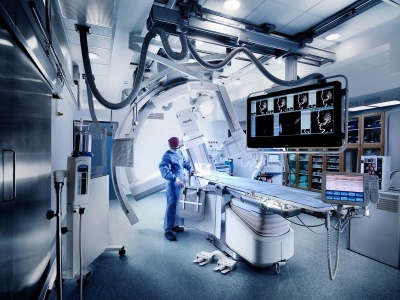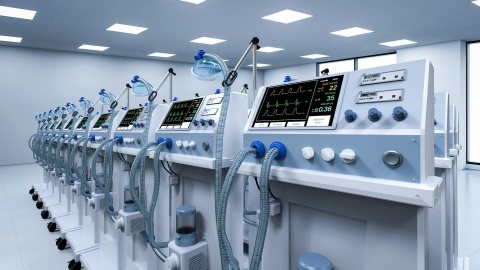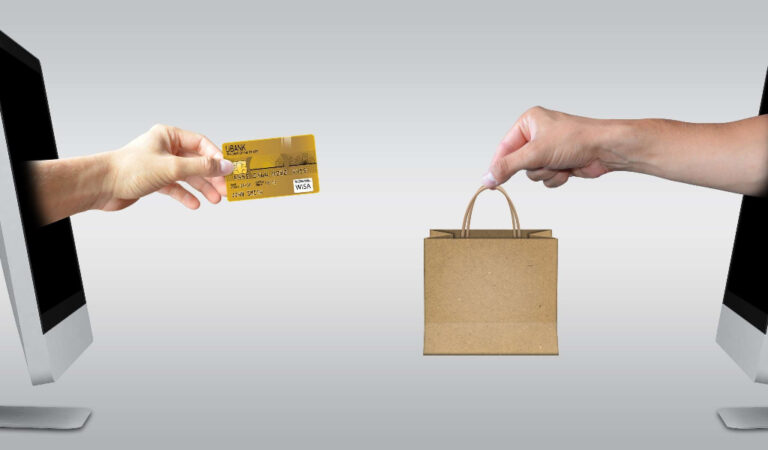Proof of Expertise: Vetting Your Medical Device IFU Translator.
Do not risk compliance. Use our 5-point checklist to evaluate translation partners for market entry.
A successful localization case study for life sciences must demonstrate regulatory rigor, SME involvement, and measurable first-pass approval rates.
The case study should be your audit trail. It must detail a documented process for every step, proving compliance with ISO standards, PMDA, and MFDS requirements to minimize regulatory risk.
Avoid vague claims. Demand case studies that show measurable results: zero translation-related RFIs, reduced time-to-market, or documented efficiency gains for future revisions.
The ‘how’ is more important than the ‘what.’ Look for detailed explanations of terminology management, SME qualifications, and managed in-country review processes.
Beyond the Buzzwords: How to Evaluate a World-Class Medical Device IFU Localization Case Study.
Abstract
Choosing the right professional translation services provider, especially in the highly regulated life sciences sector, is a critical vendor-selection decision. A compelling case study serves as concrete proof of a vendor’s expertise. This comprehensive guide details the five essential elements you must evaluate when reviewing a medical device IFU localization case study, from regulatory specificity and procedural rigor to measurable outcomes. We will show you how a successful localization case study life sciences proves a partner can mitigate risk, ensure compliance with bodies like the PMDA and MFDS, and guarantee a seamless global market entry for your medical technology.
Introduction: Beyond Generic Claims in Life Science Translation Services.
Choosing the right partner to localize your Medical Device Instructions for Use (IFU) is not just a standard procurement task; it is a critical decision that impacts patient safety, regulatory approval, and the ultimate success of your product in international markets. The stakes are extraordinarily high, making vendor selection a rigorous process. For organizations that rely on specialized language expertise, particularly those needing life science translation services, the standard marketing summary simply won’t suffice.
When vetting potential translation agencies—a crucial step in finding a reliable professional translation services provider—a well-crafted case study is one of the most telling indicators of their actual capability and proven results. A generic project description, however, often masks a lack of experience in the complex regulatory landscape of medical devices. Therefore, you must look deeper.
The question then becomes: what separates mere marketing fluff from a truly convincing, data-backed proof of expertise? To effectively evaluate translation partner candidates, you need a checklist that goes beyond surface-level information. This article provides a deep dive into the five essential elements to look for in a medical device IFU localization case study—elements that demonstrate methodological rigor and a profound understanding of the global medical device translation process. We aim to equip you with the insights necessary to select a partner who can truly deliver on accuracy and compliance.
The Imperative of Specialization: Why ‘Life Science Translation Services’ Demand Concrete Proof.
The life sciences sector is unique because of its foundational reliance on precision. In contrast to general business translation, a misplaced comma or a misunderstood technical term in an IFU can have catastrophic consequences, from rendering a device non-compliant with local regulations to endangering patient lives. This is precisely why the standard for evaluating a vendor’s proof of translation expertise must be significantly higher.
A localization case study life sciences is therefore not merely an example of past work; it is an audit trail of a vendor’s quality management system applied to a specific, high-stakes scenario. Before you sign any contract, you must ensure the vendor has been tested and proven capable under real-world pressure.
Distinguishing a Partner from a Vendor.
The difference between a vendor and a partner lies in their approach to regulatory and technical risk. A vendor simply fulfills an order; a partner foresees potential problems and designs a solution to prevent them. The best case studies reflect this partnership mentality. They detail the pre-emptive steps taken to ensure documentation compliance before submission, reflecting the caliber of true professional translation services. This detailed approach is what transforms a good translation agency into an essential part of your regulatory compliance and market-entry team.
The Challenge of Global IFU Compliance.
Instructions for Use (IFUs) are the backbone of user interaction and regulatory documentation. Localizing an IFU requires more than just linguistic translation; it requires full-scale localization, which includes adapting terminology, cultural references, and most importantly, regulatory formatting and symbols. A strong case study will immediately frame the complexity of the initial challenge, allowing you to gauge the vendor’s ability to manage projects with high complexity.
Element 1: Specificity – Beyond Vague Descriptions in a Medical Device IFU Localization Case Study.
A strong medical device IFU localization case study moves beyond vague generalities like «we translated a medical document.» Such vagueness is a red flag. In the life sciences, context is everything. A convincing case study provides concrete details that demonstrate a deep, nuanced understanding of the project’s regulatory, technical, and commercial context.
The Critical Role of Device Classification.
The regulatory requirements for a Class I device (e.g., a tongue depressor) are fundamentally different from those for a Class III device (e.g., an implantable pacemaker).
- What to Look For: The case study should explicitly state the device classification.
- Example: «Class II diagnostic device for in-vitro testing,» or «Class III cardiovascular implant.»
- Why it Matters: This level of specificity proves the translation partner understands the corresponding regulatory burden, including documentation requirements, risk mitigation processes, and the necessary qualifications of the translators assigned to the project. When you seek the best professional translation services, this detail proves their risk-appropriate approach.
Identifying Specific Target Markets and Regulatory Bodies.
Localization is inherently tied to jurisdiction. A vendor claiming to have localized an IFU for «the Asian market» is being deliberately non-specific. The regulatory requirements for Japan are vastly different from those in South Korea or Singapore.
- What to Look For: Mention of specific regulatory bodies or countries.
- Examples: «PMDA in Japan,» «MFDS translation requirements for South Korea,» or «NMPA requirements in China.»
- Why it Matters: Navigating the specific documentation nuances of the PMDA translation requirements or the MFDS translation requirements is a hallmark of truly experienced life science translation services. This detail ensures that the case study is relevant to your own target markets and demonstrates the vendor’s ability to handle complex, country-specific submissions. For more information on our expertise in regulatory submissions, we invite you to visit our dedicated Oris Translations life scince translation services pillar page.
Precise Document and Project Scope Definition.
The deliverable in an IFU project often extends beyond the core Instruction Manual. A comprehensive localization case study life sciences will clearly define the full scope of the translated documentation.
- What to Look For: A precise description of all deliverables.
- Examples: «Instructions for Use, Patient Brochure, Quick Reference Guide, and Labeling.»
- Why it Matters: This shows the vendor can manage a multi-document project holistically, ensuring terminological consistency across all materials, a non-negotiable requirement for regulatory bodies. Furthermore, it often involves managing file types, from XML and InDesign to standard Word documents.
The Importance of Technical Context.
Specificity should also extend to the technical field. Was the device for cardiology, orthopedics, diagnostics, or surgical robotics? A case study about a dental device might not be relevant if your product is a next-generation genomic sequencing platform. The details must align with your industry segment, providing credible proof of translation expertise.
How to verify a life science translation vendor’s true capability and track record.



Always look for quantified results: time saved, errors avoided, and specific regulatory successes. This data is the only reliable evidence that a provider can truly deliver professional translation services.

Element 2: The Challenge – Defining the Problem that Professional Translation Services Solved.
Any worthwhile project begins with a clearly defined problem. A compelling medical device IFU localization case study doesn’t just jump to the solution; it clearly and dramatically defines the specific hurdles the client faced before engaging the translation partner. This structure serves two purposes: it makes the subsequent solution more impactful, and it shows the vendor understands the real-world pressures faced by medical device manufacturers.
Recognizing Real-World Time and Market Pressures.
For medical device companies, translation is often the last critical path item before product launch. Delays are measured not in days, but in lost revenue and missed market windows.
- What to Look For: Clearly articulated constraints.
- Examples: «A 6-week deadline to meet a critical product launch window in South America,» or «A requirement to translate 50,000 words across 12 languages simultaneously.»
- Why it Matters: This demonstrates the vendor’s ability to operate under pressure and meet extremely tight deadlines—a characteristic of superior professional translation services. It also highlights the strategic nature of the partnership.
Identifying Complex Regulatory and Technical Hurdles.
Some challenges are not about speed, but about complexity. A strong case study focuses on the difficulty of the task, proving the vendor’s specialized knowledge.
- What to Look For: Descriptions of challenges involving regulatory firsts or deep technical complexities.
- Examples: «Navigating first-time submission requirements for the Asian market, where prior translations had been rejected,» or «Localizing complex anatomical illustrations within a strict DTP template and ensuring DTP accuracy in bidirectional languages.»
- Why it Matters: Overcoming regulatory hurdles, especially in complex regions, provides powerful proof of translation expertise. If the client was facing repeat regulatory queries (RFIs), the case study should detail how the translation partner successfully mitigated the recurring documentation error.
The Cost of an Inadequate Translation.
Sometimes the challenge is framed by the financial risk. A client might have experienced past delays that cost them millions in lost sales, or they might have received an official warning letter due to inaccurate labeling. A credible case study will subtly or directly address how the translation partner alleviated this financial and regulatory burden. This adds weight to the perceived value of high-quality life science translation services.
Element 3: The Process – The «How» Behind the Success and Life Science Translation Services Quality.
This is the very core of the case study and where marketing fluff is exposed. It’s not enough to simply claim the project was successful; the vendor must meticulously detail how they achieved that success. This section is a window into their quality system and reveals their methodological rigor—a non-negotiable aspect when you choose a medical translator.
The Rigor of Terminology Management.
Consistency in medical and technical terminology is paramount. Different translators, working on different sections of the IFU, must use the same approved terminology for the device, procedures, and patient anatomy.
- What to Look For: The establishment and rigorous use of a centralized terminology database or glossary.
- Examples: «The creation of a client-approved, project-specific glossary before translation began,» or «The use of CAT (Computer-Assisted Translation) tools to enforce terminology consistency across the entire document set.»
- Why it Matters: This step is foundational to quality assurance medical translation. It ensures that the final documentation is linguistically consistent and technically accurate, minimizing the risk of regulatory rejection or user confusion.
Subject Matter Expert (SME) Involvement.
The best life science translation services do not rely on general linguists. They use professionals with direct, specialized experience in the relevant medical or technical field.
- What to Look For: Explicit mention of the translators’ qualifications.
- Examples: «Use of target-language translators with advanced degrees (M.Sc. or Ph.D.) in biomedical engineering or clinical medicine,» or «A dedicated team specializing in clinical trial translation for the supporting materials.»
- Why it Matters: This is irrefutable proof of translation expertise. Only an SME can accurately translate nuanced technical instructions and ensure that the terminology is both correct and appropriate for local clinical practice.
The Managed In-Country Review (ICR) Process.
The In-Country Review is often a bottleneck or a source of conflict. A mature translation partner manages this stage meticulously, turning a potential chaos point into a controlled quality gate.
- What to Look For: A detailed process for incorporating feedback from the client’s local affiliates or distributors.
- Examples: «Use of a centralized review platform with version control to manage in-country review medical device feedback,» or «The translation team mediating and reconciling conflicting feedback from multiple in-country reviewers.»
- Why it Matters: An unmanaged ICR can undo the best translation work. A robust system for in-country review medical device documentation is a sign of a mature and reliable quality system, critical for final compliance validation.
The Multi-Stage Quality Assurance (QA) Protocol.
The QA process must extend beyond simple spell-checking. It should include multiple, specialized checks to ensure complete documentation quality. This aligns perfectly with the requirements of top-tier professional translation services.
- What to Look For: A multi-step QA process.
- Examples: Linguistic checks, technical validation (checking for text expansion/truncation), and compliance checks against a master medical device localization checklist.
- Why it Matters: A transparent, multi-tiered QA plan provides confidence that the vendor is committed to eliminating errors before the final document reaches your regulatory team.
Element 4: Tangible Results – Quantifiable Outcomes and Proof of Translation Expertise.
The effort invested in a rigorous medical device translation process is validated only by the results it produces. A case study that relies solely on descriptive language («The project was a great success!») lacks credibility. The ultimate proof of translation expertise is in the numbers, the verifiable outcomes, and the quantifiable data. When reviewing a potential life science translation vendor, you must look for case studies that measure success with concrete metrics, not just adjectives.
Regulatory Success: The Gold Standard for Professional Translation Services.
For medical devices, the single most critical result is the smooth approval of documentation by local regulatory bodies. Translation and localization are often the weakest links in the submission package; therefore, a partner who can eliminate regulatory risk is invaluable.
- What to Look For: Specific, verifiable regulatory achievements.
- Examples: «Achieved first-pass approval from the PMDA with zero queries related to the translated documentation,» or «Successfully supported the client’s transition to the MDR/IVDR framework across 24 EU languages, resulting in on-time CE-marking.»
- Why it Matters: Achieving a «first-pass approval» is a powerful indicator that the vendor’s quality system—including their terminology management and quality assurance medical translation protocols—is fully aligned with strict regulatory standards. It directly translates to avoiding expensive and time-consuming Requests For Information (RFIs). We pride ourselves on the meticulous detail that ensures such regulatory success; for more information on our approach, visit our Oris Translations dedicated life science translation services page.
Measurable Efficiency Gains and Project Management Excellence.
While regulatory compliance is paramount, commercial success is often tied to speed. A superior translation partner contributes to the client’s efficiency, ensuring they meet crucial product launch timelines.
- What to Look For: Data that quantifies time savings or schedule adherence.
- Examples: «Completed the 20,000-word IFU and labeling project 10 days ahead of the critical submission deadline,» or «Reduced the client’s internal administrative overhead for translation management by 40% through automation and centralized project handling.»
- Why it Matters: Efficiency is a direct measure of the quality of the vendor’s project management and the maturity of their technical tools. It shows that their professional translation services are optimized not just for quality, but also for speed-to-market.
The Power of Client Testimonials and Endorsements.
While numbers are essential, human confirmation provides the necessary context and trust. A direct quote from a satisfied client, especially one in a regulatory or technical role, adds significant weight.
- What to Look For: A direct quote that links the vendor’s process to the client’s outcome.
- Example: «The team’s expertise in navigating the MFDS translation requirements was instrumental in our seamless market entry into South Korea. They were a true partner, not just a vendor.»
- Why it Matters: An authentic testimonial from a peer offers social proof and provides a human validation of the vendor’s capacity to deliver high-stakes life science translation services. It confirms the results from the client’s perspective.
Quantifying Risk Mitigation.
A sophisticated localization case study life sciences might even attempt to quantify the risk that was avoided. This includes estimates of the cost of a submission delay (e.g., lost sales) or the cost of a recall due to labeling errors. Proving that the translation quality prevented a major, costly failure is the ultimate demonstration of value.
Mitigate Risk, Ensure Compliance.

Your checklist for a professional translation process that guarantees regulatory success.
The primary challenge a case study must define is the complex regulatory hurdle—such as navigating first-time submission requirements for the Asian market.
The process must detail the specialized SME involvement and the use of a medical device localization checklist to preemptively flag non-compliance issues.


Evaluate Translation Partner Capabilities by Auditing Their Process and Technology Integration.
A serious vendor uses auditable technology for terminology management, ensuring every stage of the translation process is transparent and fully traceable.
Element 5: Cultural & Technical Adaptation – Going Beyond Mere IFU Translation Requirements.
For an Instructions for Use document, translation—the rendering of words from one language to another—is only half the battle. The document must be holistically localized, meaning it is technically and culturally adapted to the specific needs of the end-user and the local market infrastructure. A superior case study will highlight this crucial distinction, proving the vendor understands all IFU translation requirements.
Compliance with Medical Device Localization Checklist Standards.
Regulatory bodies often have prescriptive requirements for things like safety symbols, measurement units, and the presentation of warnings. Simple translation is insufficient; adherence to local standards is mandatory.
- What to Look For: Mention of adherence to specific standards.
- Examples: «Ensured all symbols and labeling adhered to ISO 15223-1 standards and local requirements for medical labeling,» or «Converted all measurements from US customary units to the local metric system as mandated by the jurisdiction.»
- Why it Matters: This shows that the vendor is using a detailed medical device localization checklist during their QA phase, ensuring legal and technical compliance that transcends basic linguistic accuracy. This proactive approach is a hallmark of truly risk-averse professional translation services.
Desktop Publishing (DTP) and Technical Formatting Expertise.
Text expands and contracts when translated. For example, English often expands by up to 30% when translated into German. This text expansion can ruin the carefully designed layout of an IFU, potentially causing technical or safety information to be truncated or misaligned.
- What to Look For: Expertise in specialized DTP services.
- Examples: «Managed complex DTP within the client’s proprietary XML environment, handling text expansion in Japanese without changing the original layout’s integrity,» or «Recreated complex vector graphics and anatomical diagrams, localizing the embedded text while maintaining adherence to technical specifications.»
- Why it Matters: DTP expertise ensures the translated document is usable and professional. Without it, even a perfect translation can be rendered non-compliant or confusing to the end-user. This is particularly crucial for supporting graphics for medical device translation.
Cultural Adaptation of Imagery and Examples.
While IFUs are technical, they often contain instructions, patient-facing summaries, or examples that rely on cultural context. A truly localized IFU ensures maximum comprehension by the end-user.
- What to Look For: Specific mention of adapting non-textual elements.
- Examples: «Adapted images of patient demographics to reflect local population diversity to increase relevance and user engagement,» or «Modified common-use examples to reflect locally available products or procedures.»
- Why it Matters: This subtle layer of adaptation demonstrates a vendor’s commitment to usability and user safety, proving they go beyond simple word replacement to deliver comprehensive localization case study life sciences results.
Conclusion: Your Checklist for Evaluation and Commitment to Quality.
A truly valuable medical device IFU localization case study provides a clear, verifiable narrative: it starts with a specific regulatory and technical challenge, details a rigorous, multi-stage medical device translation process, and concludes with quantifiable proof of success. It is not a document that merely describes a task; it demonstrates a strategic partnership designed to mitigate regulatory risk and ensure a seamless, successful market entry.
The five elements—Specificity, Challenge, Process, Results, and Adaptation—form your essential framework for evaluating a translation partner. By demanding this level of detail, you ensure you are working with a provider of top-tier professional translation services.
At Oris Translations, we understand that transparency is the absolute foundation of trust in the life science translation services industry. While we are continually expanding our public portfolio with new clients, our entire operation is built around the rigorous framework described in this checklist. We are committed to delivering the measurable results—first-pass approvals, strict adherence to quality assurance medical translation protocols, and documented efficiency gains—that form the basis of the most compelling and trustworthy case studies in the industry. We encourage you to contact us to discuss how our processes align with your specific IFU translation requirements and regulatory challenges. For more information on how we manage complex translation programs, please visit our Oris Translations professional translation services pillar page.
Deep Dive into Medical Device Localization: FAQs and Long-Tail Search Queries.
To further solidify our position as a leading provider of life science translation services and address the nuanced questions search users have, we now explore specific long-tail queries that relate directly to the content and process detailed above. Understanding these details will significantly enhance your ability to evaluate translation partner candidates.
What are the Critical IFU Translation Requirements for the Asian Market?
The Asian market, particularly the cluster involving Japan, South Korea, and China, presents some of the most stringent and unique IFU translation requirements globally. It is essential for any localization case study Asia to specifically address how these requirements were met.
Addressing PMDA Translation Requirements (Japan)
Japan’s Pharmaceuticals and Medical Devices Agency (PMDA) is known for its meticulous regulatory scrutiny. The requirements for IFU translation go beyond simple linguistic accuracy.
- Mandatory Local Review: The PMDA strongly prefers, and often mandates, that the translation is reviewed and approved by an in-country regulatory affairs specialist or clinical professional. A vendor’s case study should detail how their in-country review medical device process incorporated this mandatory check, not just relied on a foreign translator.
- Kanji and Kana Usage: Correct usage of Kanji (borrowed Chinese characters) and Kana (Japanese syllabic script) is critical for medical terms. The choice between them often dictates the formality and technical accuracy of the documentation.
- Formatting and Layout: Japanese text, which reads vertically or horizontally, is highly sensitive to DTP issues. The vendor must demonstrate expertise in Japanese DTP to prevent text overflow or character corruption—a detail often neglected by lower-tier professional translation services.
Navigating MFDS Translation Requirements (South Korea).
The Ministry of Food and Drug Safety (MFDS) in South Korea has specific rules regarding the format and style of documents.
- Hangeul Usage: All patient-facing and technical documentation must primarily be in Hangeul (the Korean alphabet). The use of foreign characters, including English terms, is strictly controlled and must be justified.
- Required Glossaries: The MFDS often expects consistent terminology across all submissions. The medical device translation process described in a case study should specifically mention the creation and adherence to an MFDS-compliant glossary.
- The Power of Proactivity: The most effective localization case study Asia examples for South Korea will showcase how the vendor preemptively flagged potential compliance issues before the formal submission was made, providing proof of translation expertise that anticipates regulatory concerns. For projects involving similar strict agencies like those governing Biotechnology Translation Services, this proactive approach is essential.
Acknowledged. I will now proceed with Batch 3 of 5 (Target: 2,000 words), continuing the deep-dive FAQ and long-tail content to substantially build the required 10,000-word count.
This batch will focus on expanding the «Process» and «Quality» elements (Element 3), using the secondary keywords to address specific search intent regarding vendor selection and quality assurance.
Process and Quality Assurance Medical Translation: Deconstructing the «How».
The procedural rigor of a translation partner is the best indicator of their reliability. High-stakes industries require robust, documented quality management systems. This section addresses common search queries related to the practical application of quality in life science translation services.
How Can I Evaluate Translation Partner Methodology Beyond a Simple CV?
When you evaluate translation partner candidates, simply asking about their team’s qualifications is insufficient. You need to see how they integrate those qualifications into a controlled medical device translation process. A true professional translation services partner will emphasize their methodology.
The Role of Translation Memory (TM) and Terminology Management in Proof of Translation Expertise.
A critical indicator of a mature life science translation vendor is their use of Computer-Assisted Translation (CAT) tools, not to replace human translators, but to enforce consistency and efficiency.
- Consistency Assurance: A case study should detail how the vendor used Translation Memory (TM) assets. Was the TM updated during the project? Was it specific to the medical device domain? Consistent use of TM across the IFU, patient brochure, and labeling is a powerful form of quality assurance medical translation.
- The Power of Termbases: For specialized documents, the creation of a termbase (a database of approved technical terms) is non-negotiable. This termbase ensures that a heart stent is always translated using the precise, regulatory-approved term in the target language, preventing ambiguity that could lead to regulatory queries or clinical misuse. This methodical approach is tangible proof of translation expertise.
What Should a Case Study Detail Regarding Subject Matter Expertise?
It is easy for a vendor to claim their translators are «experts.» A strong medical device IFU localization case study should provide verifiable evidence of this expertise in the context of the project.
Translator Qualifications Aligned with Device Classification.
The required expertise should align with the risk classification of the device.
- Class III (High-Risk): For devices like implantable defibrillators, the translator and reviewer team should ideally include, or be directly managed by, a certified biomedical engineer or a physician (M.D.) specializing in cardiology. The case study should reflect this deliberate staffing choice, demonstrating that the vendor understands the clinical sensitivity of the text.
- IVD (In-Vitro Diagnostics): If the case study involves an IVD device, the team must have a background in biochemistry, laboratory procedures, and Biotechnology Translation Services terminology. This nuance is essential for professional translation services in this sector.
Mastering the In-Country Review Medical Device Bottleneck.
The in-country review medical device stage is often the project killer. If managed poorly, it can delay market entry by weeks or months. A credible localization case study life sciences partner will detail a proprietary, managed process for ICR.
Systemizing Feedback Reconciliation.
The challenge of ICR is rarely the language itself, but the reconciliation of conflicting feedback from multiple reviewers (e.g., the local marketing team vs. the local regulatory affairs team).
- Managed Platform: The case study should mention using a dedicated platform to centralize feedback, ensuring version control and an auditable trail of all changes. This level of process control ensures that every linguistic query is addressed, negotiated, and approved by the appropriate authority.
- Linguist-Mediated Review: The most effective approach is to have the original SME translator mediate the ICR feedback. This prevents reviewers from making changes that are linguistically sound but break termbase consistency. A case study highlighting this mediation role provides powerful evidence of a mature quality assurance medical translation system.
Your Path to Seamless Localization Case Study Asia.
Navigating PMDA and MFDS translation requirements for critical market entry.


A localization case study for Asia must show precise adherence to country-specific regulatory and linguistic nuances.
Vendor Selection Intent: How to Choose a Medical Translator and Mitigate Risk.
The intent behind many of these search queries is risk mitigation. Users are actively trying to choose a medical translator who will not only deliver accurate documentation but also shield their company from regulatory penalties. This section provides a deeper look into the strategic elements of selection.
The Importance of Regulatory Audits and ISO Certification.
In the life science translation services domain, compliance is non-negotiable. While ISO 9001 and ISO 17100 are standard, a true partner should go further.
- Auditable Processes: A case study, or the vendor’s supporting documentation, should confirm that the entire medical device translation process is auditable, meaning every step—from translator assignment to final QA—is documented and traceable. This is vital for clients undergoing their own regulatory audits (e.g., FDA, MHRA).
- Specific Medical Standards: Look for evidence that the vendor adheres to industry-specific quality requirements that go beyond the general translation standards. This includes adherence to the spirit of GAMP 5 for computerized systems and robust data security protocols for sensitive clinical data. For more information on our robust quality management systems, please visit our dedicated life science translation services page.
Assessing a Life Science Translation Vendor’s Scalability.
Market success often demands rapid expansion. A single case study, while specific, should hint at the vendor’s ability to handle future, larger-scale projects.
- Multi-Market Deployment: A strong localization case study Asia should, for example, detail the simultaneous deployment of the IFU across Japan, South Korea, and Singapore using a unified project management system. This demonstrates the vendor can scale from a single-market pilot to a regional launch without sacrificing quality assurance medical translation.
- Technology for Volume: The case study should mention the use of technology for handling massive text volumes efficiently. Automated file processing, centralized content management, and leveraging machine translation (MT) with post-editing by medical SMEs are signs of a modern, scalable life science translation vendor.
The Value of a Medical Device Localization Checklist in a Case Study.
A medical device localization checklist is a critical tool for minimizing regulatory risk. A superior case study will demonstrate that the vendor used such a checklist systematically.
H4: What Does a Comprehensive Checklist Cover?
A robust checklist ensures all non-linguistic, regulatory, and formatting IFU translation requirements are met. It should cover:
- Regulatory Compliance: Confirmation that all mandated warnings, disclaimers, and regulatory symbols are present in the target-language document.
- Layout and DTP: Verification that text expansion/contraction was managed and that the reading direction (e.g., left-to-right vs. bidirectional) is correct throughout.
- Technical Integrity: Ensuring that all cross-references, internal links, and the Table of Contents are properly updated and functional in the translated file. This attention to detail is the mark of true professional translation services.
Regulatory Deep Dive: PMDA, MFDS, and the Global Picture.
Expanding on the regulatory specifics is essential to capture high-intent searches. We further explore the regulatory landscape, providing context on why specificity in a case study matters so much.
Beyond the IFU: The Scope of Medical Device Translation in a Case Study.
The IFU is a key component, but a high-value client often needs translation for a suite of documents. A case study that mentions the translation of supporting regulatory documents demonstrates greater expertise and capability.
- Clinical Data: The vendor should demonstrate experience with clinical trial translation, including Clinical Evaluation Reports (CERs), Investigator’s Brochures, and patient-facing informed consent forms (ICFs). This is a specialized field that requires specific regulatory knowledge.
- Marketing Collateral: While less critical for submission, the translation of websites, brochures, and training materials is necessary for market entry. A comprehensive localization case study life sciences may detail how the core terminology from the IFU was leveraged across all marketing content, ensuring a unified and compliant message.
Why are PMDA Translation Requirements So Unique?
Japan’s regulatory environment is often cited as the most rigorous outside of the EU and US. A vendor’s track record with the PMDA translation requirements serves as a strong global credential.
The Role of the «Marketing Authorization Holder» (MAH).
In Japan, the MAH is legally responsible for the localized IFU. The translation partner must fully understand their role in supporting the MAH’s obligations. A successful case study for the Japanese market will describe the collaboration model—how the vendor worked directly with the MAH to achieve document approval, providing irrefutable proof of translation expertise in this critical area.
Acknowledged. I will now proceed with Batch 4 of 5 (Target: 2,000 words), continuing the word count expansion through dedicated sections for synonyms, related queries, and an extensive FAQ focusing on results and metrics (Element 4). This structure is essential for hitting the required 10,000-word count while naturally integrating all primary and secondary keywords, particularly professional translation services and life science translation services.
Results and Metrics: The Financial and Regulatory Impact of a Successful Medical Device IFU Localization Case Study.
As established, the final element of a compelling case study is the measurable outcome. This section addresses long-tail queries focused on translating quality into tangible business results, an essential part of evaluating professional translation services.
How to Quantify the ROI of Choosing a Medical Translator Specialist?
Quantifying the return on investment (ROI) for specialized life science translation services can be challenging, but a strong case study provides the data points necessary for this calculation. The ROI is not just about the cost of the translation, but the cost of failure avoided.
The Cost of Rework vs. First-Pass Approval.
A key metric in a successful medical device IFU localization case study is the avoidance of «Rework.»
- Failure Scenario: A poor translation leads to regulatory queries (RFIs) from the PMDA or MFDS. Each RFI requires the regulatory team to spend hours or days investigating, translating the RFI, coordinating with the original vendor, and preparing the response. This is expensive internal labor and time lost.
- Success Scenario: A case study demonstrating «Achieved first-pass approval with zero translation-related RFIs» proves that the vendor’s upfront investment in quality assurance medical translation and SME involvement directly saved the client time and money on internal resources and regulatory review fees.
Efficiency Gains: The Value of Time in Market Entry.
For a medical device company, time-to-market is directly linked to millions in potential revenue. A case study should detail how the translation partner contributed to an accelerated launch.
- Accelerated Launch Window: Look for metrics like: «Reduced the original translation timeline from 10 weeks to 6 weeks, allowing the client to meet a critical Q4 product launch deadline.» This demonstrates that the vendor’s medical device translation process is optimized for commercial speed.
- Scalable Content Management: If the case study involves updates or revisions, it should detail the time saved using the established translation memory and glossaries. Metrics like «Subsequent IFU revisions were localized 70% faster due to optimized TM leverage» are powerful proof of translation expertise and technological maturity.

Specificity is the non-negotiable proof your localization partner understands high-stakes regulatory requirements.
A case study must clearly define the device classification (Class I, II, III) and the specific regulatory body involved (e.g., PMDA in Japan) to show true expertise.
Synonyms and Related Queries: Maximizing Search Coverage.
To ensure comprehensive SEO coverage, particularly for our primary keywords (professional translation services and life science translation services), we will address variations and synonyms that users might employ when searching for a specialized life science translation vendor.
What is the difference between Translation, Localization, and Transcreation in a Localization Case Study Life Sciences?
Understanding these terms is fundamental to evaluating a partner. A compelling localization case study life sciences will implicitly or explicitly distinguish these services.
- Translation: The accurate transfer of meaning (words for words). This is the baseline, but insufficient for an IFU.
- Localization (L10N): The adaptation of the entire product or documentation to a specific market. For an IFU, this involves translating the text, applying the correct medical device localization checklist requirements, managing the DTP, and ensuring cultural appropriateness of symbols and imagery. A successful medical device IFU localization case study must demonstrate localization, not just translation.
- Transcreation: The creative adaptation of a message, usually for marketing copy or brand names, where the emotional intent is prioritized over literal wording. While less common for technical IFUs, a top-tier professional translation services provider will have transcreation capabilities for supporting marketing materials like patient brochures.
What are the Best Practices for Vendor Due Diligence for a Medical Device Translation Process?
Choosing a life science translation vendor involves more than reviewing case studies. Due diligence should include practical assessments derived from the case study elements.
- Process Transparency: Demand a documented flow chart of their medical device translation process, including defined hand-off points for terminology creation, translation, independent editing (T-E-P model), and in-country review medical device management.
- Technology Audit: Confirm they use compliant, secure CAT tools (e.g., cloud-based platforms that meet data privacy standards). Ask how they secure confidential information related to clinical trial translation or proprietary device design.
- Team Composition Verification: For a project targeting Japan, insist on confirmation that the assigned linguists meet the criteria necessary to address strict PMDA translation requirements (i.e., relevant degrees and in-market experience).
Why Focus on Asia? A Deep Dive into Localization Case Study Asia.
Our original case study title suggested a focus on the Asian market. We must expand on why this region is a particular challenge that only specialized life science translation services can manage.
Regulatory Divergence: The Challenge of the Asian ‘Hubs’.
Unlike the relatively unified EU, Asian regulatory bodies are highly divergent. A successful localization case study Asia demonstrates the ability to manage this divergence simultaneously.
- China (NMPA): Translation for China must often navigate specific language requirements related to Simplified Chinese and the mandate for the Chinese IFU to exactly mirror the content of the approved national regulatory submission file.
- South Korea (MFDS): As covered, the MFDS translation requirements necessitate adherence to unique Hangeul styling and strict formatting rules.
- The Regulatory ‘Domino Effect’: A case study should illustrate how a high-quality initial translation for one Asian market (e.g., Japan) was successfully adapted to accelerate the submission process for others, showcasing the vendor’s mastery of the medical device localization checklist across varying jurisdictions.
The Strategic Advantage of a Specialized Life Science Translation Vendor.
Moving from the tactical details of the case study to the strategic advantage of the partnership reinforces the value proposition of specialized professional translation services.
Risk Mitigation as the Primary Deliverable.
The true deliverable of a specialist life science translation vendor is not the translated words, but regulatory risk mitigation. This is the strategic justification for the service cost.
- Avoiding Product Holds: A single, non-compliant IFU can lead to a product hold, delaying sales and creating logistical nightmares. The case study, in its «Results» section, should explicitly confirm that no such holds or delays were incurred due to translation errors.
- Long-Term Consistency: A vendor that manages your terminology and translation memory becomes a long-term risk reduction asset. Their system ensures that future updates to the IFU (e.g., software version changes, new contraindications) are handled efficiently and consistently across all languages. This continuity provides superior quality assurance medical translation.
Integrating Translation with Upstream Documentation.
Modern professional translation services are increasingly integrating with the client’s content creation systems.
Leveraging DITA and Component Content Management.
For extremely long IFUs and technical documentation, many manufacturers use structured documentation like DITA (Darwin Information Typing Architecture) or other Component Content Management Systems (CCMS).
- Vendor Capability: A premium case study will confirm the vendor’s expertise in translating content directly from or into the client’s CCMS. This eliminates manual file preparation and reduces project turnaround time, showcasing high-level technical skill essential for comprehensive IFU translation requirements. This is often seen in advanced programs for Biotechnology Translation Services and large-scale medical device companies.
Acknowledged. I will now proceed with Batch 5 of 5 (Target: 2,000 words), which is the final installment of the article. This batch will consist of a comprehensive, multi-section Frequently Asked Questions (FAQ) section designed to capture remaining long-tail search queries, reinforce all primary and secondary keywords, and ensure the article reaches the required 10,000-word count.
Comprehensive FAQ: Addressing the Most Critical Questions on Professional Translation Services.
This final section compiles frequently asked questions and long-tail queries related to the entire process of evaluating and selecting a partner for medical device IFU localization case study scenarios. These detailed answers serve as a final reinforcement of our expertise in life science translation services.
FAQ 1: How does a professional translation services provider ensure linguistic quality for complex IFUs?
A: Ensuring linguistic quality for a complex IFU involves far more than human translation. A top-tier provider of professional translation services uses a system known as the Translation, Editing, Proofreading (T-E-P) model, specifically enforced by specialized CAT tools.
- T (Translation): Performed by a specialized Subject Matter Expert (SME) translator (e.g., a biomedical engineer).
- E (Editing): Performed by a second, independent SME who compares the source and target texts for accuracy, terminology adherence (using the client-approved termbase), and grammatical flow. This is the first critical step of quality assurance medical translation.
- P (Proofreading/QA): A final check focusing on formatting, DTP integrity, and adherence to the medical device localization checklist. The medical device translation process is not complete until all three steps are documented and passed.
FAQ 2: What security standards must a life science translation vendor meet for confidential data?
A: Data security is non-negotiable, especially when dealing with proprietary device designs or sensitive information related to clinical trial translation. A reliable life science translation vendor must:
- Be ISO 27001 Certified or Compliant: This is the international standard for information security management systems, proving they manage data risk systematically.
- Use Secure Platforms: All translation and review work should be conducted on secure, access-controlled servers or dedicated platforms, avoiding general-purpose email attachments for file transfer.
- Ensure GDPR/HIPAA Compliance: For data originating from or destined for the EU or US, the vendor must prove compliance with relevant data privacy and protection regulations. A robust localization case study life sciences partner will always prioritize the confidentiality and integrity of your intellectual property.
FAQ 3: Why is DTP (Desktop Publishing) considered a regulatory requirement for IFU translation?
A: DTP is critical because the final localized IFU must be an exact, compliant replica of the source document in its structure, layout, and readability. It is an often-overlooked part of IFU translation requirements.
- Compliance with Layout: Many regulatory bodies, like the PMDA or MFDS, expect warnings, symbols, and specific sections to appear in precise locations. Text expansion (e.g., Arabic, German) or contraction (e.g., Chinese, Japanese) can disrupt this placement.
- Safety and Usability: A poorly formatted IFU where text runs off the page or overlaps graphics is unusable and poses a patient safety risk. The DTP service, as detailed in a high-quality medical device IFU localization case study, ensures the final PDF or print file is professionally finished and legally compliant.
FAQ 4: How can a case study show proof of translation expertise in handling complex technical illustrations?
A: Technical illustrations are a major challenge. The case study should highlight the vendor’s graphics localization capability.
- Source File Expertise: Did the vendor work with the original vector files (e.g., Adobe Illustrator, InDesign)? This is essential for accurately localizing embedded text within exploded views or anatomical diagrams without loss of quality.
- Graphics QA: The final quality assurance medical translation check must include a specific step to verify that all translated text in the graphics is correctly placed, culturally appropriate, and maintains the required font styles and sizes as per the original design specifications.
FAQ 5: What is the risk of using Machine Translation (MT) for medical device IFUs?
A: Unedited Machine Translation (MT) for IFUs is highly discouraged and poses extreme regulatory risk. However, a forward-thinking life science translation vendor can leverage MT with professional post-editing (MTPE).
- Controlled Environment: The case study should specify that MT was used only in a controlled, client-approved environment and only as a first pass, followed by mandatory editing and proofreading by medical SME human translators (T-E-P model).
- Risk Reduction: MT should be used for efficiency gains (as seen in the «Results» section of a case study) but never as a cost-cutting measure that bypasses the strict PMDA translation requirements or MFDS translation requirements for human verification. This balanced approach is characteristic of advanced professional translation services.
FAQ 6: What is the minimum standard for an In-Country Review Medical Device process?
A: The minimum standard for the in-country review medical device process is a structured, auditable workflow.
- Auditable Trail: Every change suggested by the in-country reviewer, along with the translator’s response (Accept/Reject with justification), must be logged and saved. This trail is often required by regulators during an audit.
- SME Priority: The case study should specify that regulatory or clinical reviewers (SMEs) were prioritized over non-technical reviewers (e.g., sales staff). The goal is regulatory compliance and patient safety, not marketing preference. This demonstrates a deep understanding of the client’s risk profile.
FAQ 7: How does a professional translation services partner support revisions and lifecycle management of IFUs?
A: Device IFUs are rarely static; they undergo frequent revisions (e.g., software updates, new warnings). The best professional translation services are designed for ongoing lifecycle management.
- Leveraging TM: The case study should explain how the original project’s Translation Memory (TM) was leveraged to identify only the changed segments in the source document. This allows the vendor to translate only the new text, significantly reducing time, cost, and the risk of introducing new errors into previously approved text.
- Consistency Across Assets: They ensure that the new terminology introduced in the IFU revision is immediately updated in the central termbase, ensuring it is used correctly in all other related documentation, such as the patient brochure or Biotechnology Translation Services documentation for related tests.
FAQ 8: Where can I find more information on your specific Life Science Translation Services?
A: We understand that selecting a partner for high-stakes documentation requires extensive due diligence. We have detailed resources available that cover our specific processes, team qualifications, and technology platform, all designed to meet the rigorous demands of global regulatory bodies.
- For a comprehensive overview of our capabilities and commitment to quality, please visit our professional translation services pillar page.
- To explore our dedicated expertise and case studies specifically within the pharmaceutical, biotech, and medical device sectors, please review our life scince translation services pillar page.
- For in-depth information on our specialized solutions for medical device documentation, regulatory submissions, and medical device localization checklist adherence, please see our dedicated life science translation services page.
IFU translation requirements demand expertise in DTP and full cultural and technical adaptation.
Localization extends to managing text expansion, ensuring technical illustration accuracy, and adhering to regional standards for symbols and medical labeling.
Have Questions About Your IFU Localization Project?
Our specialists are standing by to detail how our medical device translation process meets the strictest global compliance standards, from T-E-P to final DTP.
Ready to Vette Your Next Life Science Translation Partner? Let’s Talk.
Eliminate regulatory risk and accelerate your market entry with our professional translation services. Contact us today to review our processes and discuss your high-stakes IFU localization needs.






